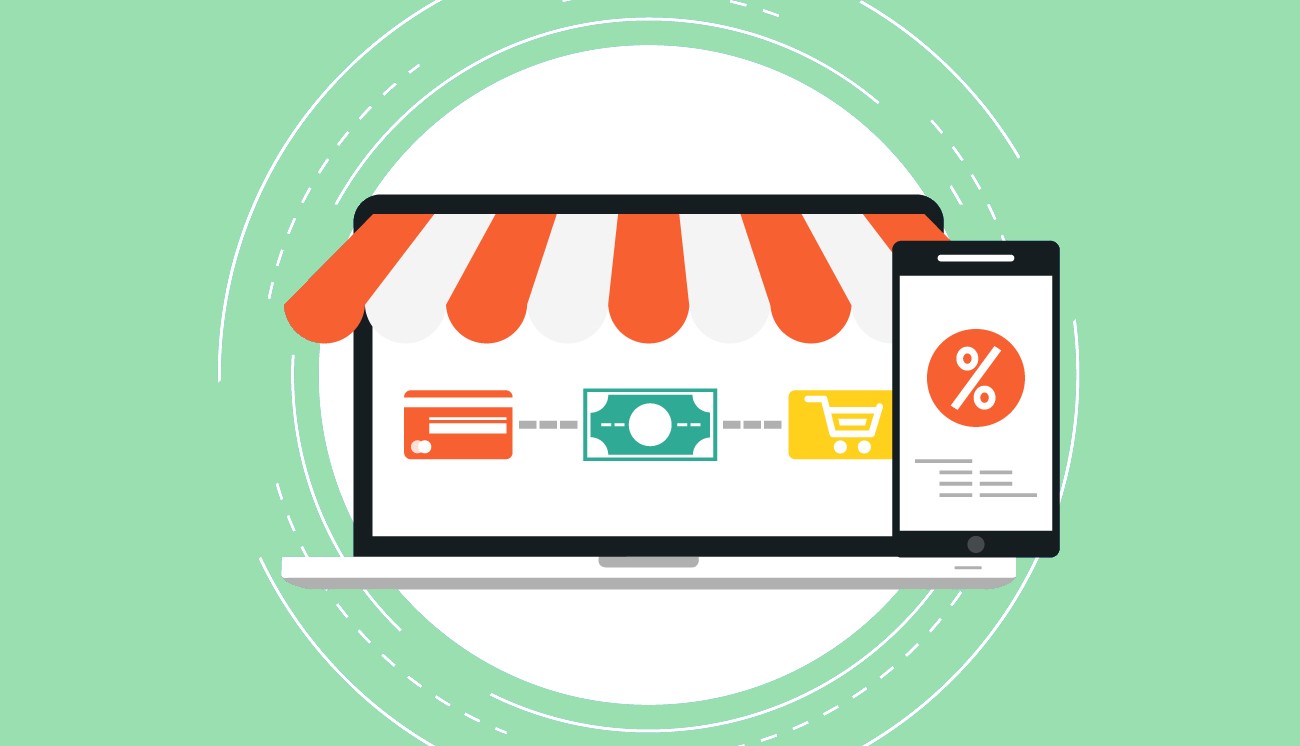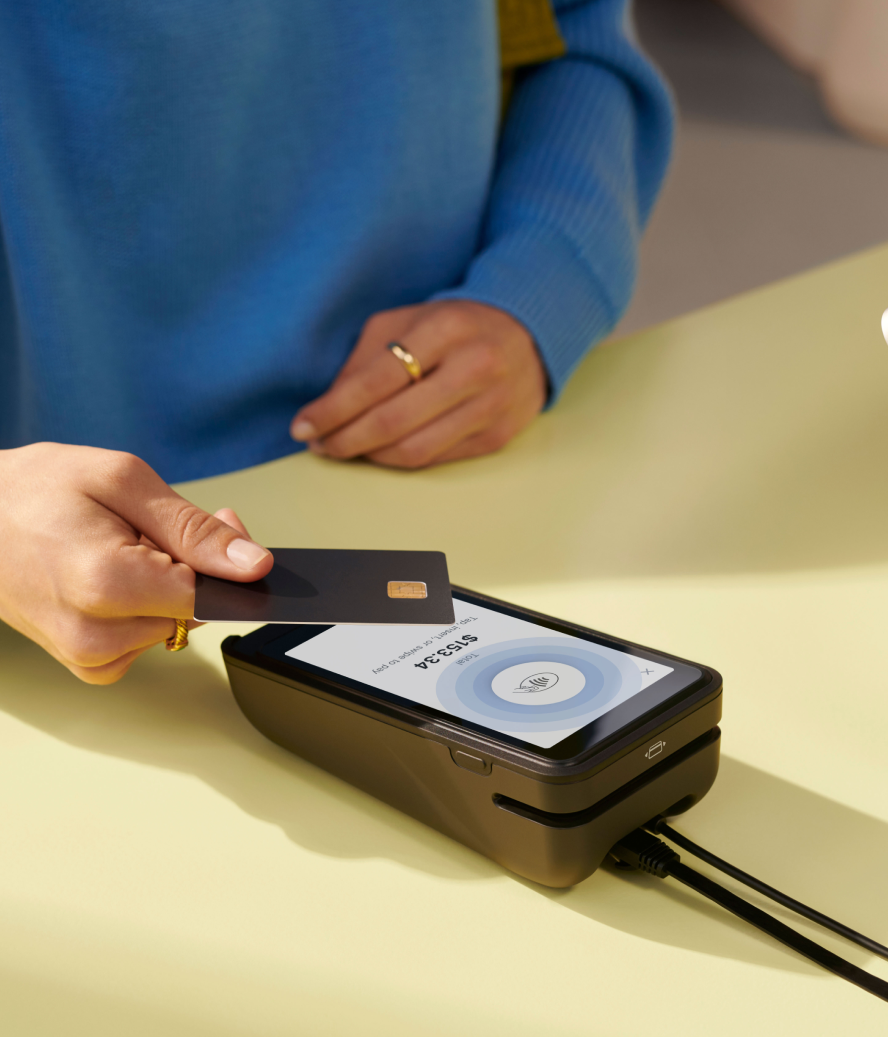If you don’t use a payment provider and you want to accept credit card payments from your customers, you’ll need a merchant account.
Merchant accounts act as a bridge between your business accounts and customer card issuers, processing transactions and crediting you for sales.
Spurred on by the pandemic, retail is becoming increasingly cashless and online. So it makes sense to invest in merchant services that allow customers to pay seamlessly with their cards.
Here are the basics of merchant accounts, account fees, and how to choose the right merchant acquiring bank.
Table of Contents
What is a merchant account?
A merchant account is a business bank account for accepting credit card payments.
When a customer purchases a product using a credit card or other electronic payment method, a merchant account communicates with the card issuer, withdraws funds from the customer’s account, and credits the merchant. This system helps reduce payment delays.
If you have a business license, you can open a merchant account with an acquiring bank to start accepting card payments.
How does a merchant account work?
- A transaction passes through an encrypted payment gateway
- Your merchant account communicates with the customer’s card issuer
- Your merchant account receives funds and credits your bank accounts
1. A transaction passes through an encrypted payment gateway
When a customer buys one of your products with a credit card, your payment gateway contacts the credit card issuer to make sure the cardholder has enough funds for the transaction. (You can usually set up your payment gateway at the same time you create a merchant account.)
2. Your merchant account communicates with the customer’s card issuer
Your merchant account communicates with the customer’s card issuer to confirm the transaction. Once approved, the merchant account deducts the transaction amount from the customer’s credit card.
3. Your merchant account receives funds and credits your bank accounts
The merchant account provider settles the transaction by depositing funds into your company’s bank account. It will also take a transaction fee—typically 3% to 5% of the total amount.
Deposits don’t happen as soon as a transaction goes through. Instead, they’re processed in batches toward the end of the working day or week.
Benefits of a merchant account
Unless you plan to use an integrated solution like Shopify Payments, you’ll need a merchant account to accept credit card payments. But there are other benefits to setting up a merchant account and payment gateway:
- Increase sales
- Improve cash flow
- Easy money management
- Better customer experience
- Secure payment processing
Increase sales
The data is clear: Card payments are on the increase, while cash purchases are declining. With as few as 9% of Americans now using cash for daily purchases, your business stands to lose out if you’re not able to process card transactions.
The COVID pandemic’s legacy of cashless interactions, alongside the continued rise of ecommerce sales, is accelerating the trend toward a cashless economy. According to findings by the Federal Reserve Bank of San Francisco, cash made up just 18% of payments in the US in 2022, down from 31% five years prior.

Improve cash flow
Merchant accounts speed up payment authorization, meaning your money reaches your accounts more quickly. Sales are usually deposited within one or two working days, as opposed to individually billing your customers and waiting up to 30 days or more to receive payment.
Easy money management
With the bulk of transactions made using debit and credit cards, there’s a reduced need to track, count, and manage physical money. You may choose to process all payments with a point-of-sale (POS) system and go fully cashless for smoother money management.

Better customer experience
Your customers are in for a hassle-free shopping experience when they have the liberty to shop and make payments using the payment methods of their choice. This leads to a better customer experience which, in turn, can ensure that the shoppers come back for more.
💡 Tip: When your customers use electronic payment methods, send them an email receipt. Digital receipts are convenient for customers and help your ecommerce email marketing by giving you a reason to collect contact information at checkout.
Secure payment processing
Payment gateways act like a bridge that integrate online card processing capabilities with your business operations, reducing the likelihood of fraud and theft. That means a more secure checkout experience for you and your customers.
Types of merchant account
- Retail
- Mobile
- Ecommerce
There are different types of merchant accounts that cater to the specific needs of businesses. Choose the account that best fits your business type.
Retail
Businesses opening a retail store should use a retail merchant account for the lowest setup and transaction costs. These merchant accounts are designed for stationary businesses that process most of their payments in-store.
📌 Get started: Get the funding you need to open a physical store with Shopify Capital. Avoid lengthy application processes, paperwork, and credit checks, and receive funding within days of accepting an offer.
Mobile
Your business will require a mobile merchant account if it’s on the move (think: you’re a florist or food truck owner). To process credit card payments, these accounts pair with cellular processing equipment or smartphone apps.
Ecommerce
If you sell your products or services online, an ecommerce merchant account will support online checkout for your customers. Merchant accounts for ecommerce businesses are not the same as those of brick-and-mortar stores, and may charge higher transaction fees.
How to open a merchant account
- Organize the necessary documents
- Apply for a merchant account
- Gain approval and set up your account
1. Organize the necessary documents
You will need to provide your business information, the name of your company, contact details, the amount of time you have been in business, bank account details, and financial statements.
💡 Tip: If you are already using a credit card processing tool, share this information with your merchant account provider to ensure fast approval.
2. Apply for a merchant account
After you have provided all the necessary information about your company, it’s time to send in your application. The processor may want to check your personal and business credit history to ensure your business is financially sound.
At this point, you may also have to pay an application fee to your merchant account provider.
💡 Tip: Remember to include a cover letter along with your application stating what your business does and why you require a merchant account.
3. Gain approval and set up your account
The merchant account provider will check your risk level before approving your application. They will consider the following criteria:
- The length of time you have been in business
- Personal and business credit history, to check for any defaulted payments or if you were ever bankrupt
- If you have had a merchant account in the past
- Your type of business
The processor will consider your business to be less risky if you process transactions in person rather than online or via phone. Online transactions are susceptible to fraud.
To lower risk, the merchant account provider may seek address verification. The merchant account provider will approve your application if you fall into its low-risk category. The provider may approve riskier applications but at a higher fee.

Merchant account fees
Merchant services should support your business, not drain it with excessive fees. It’s important to understand what credit card processing entails and the different costs involved.
Usually, merchant services providers will adhere to one of three pricing models:
Flat-rate pricing
Flat-rate pricing is one of the most common merchant account pricing models. The acquiring bank charges a fixed fee for all credit and debit card payments, no matter what card the customer uses. Flat fees are most useful if your sales volume is low, and are usually structured as:
Flat Fee = Percentage + Transaction Fee
Flat fees range from 0.5% to 5% of the transaction amount, plus 20¢ to 30¢ per transaction.
Interchange-plus pricing
In the name of transparency, an interchange-plus pricing structure splits costs into multiple parts. There’s an interchange fee and a plus markup.
- Interchange fees are charged by credit card companies and passed on to businesses.
- The plus rate refers to the payment processor’s markup or profit.
For instance, an interchange-plus pricing structure might appear as 2.4% plus 10¢ per transaction.
Tiered pricing
In this pricing model, the merchant service provider charges a fee depending on the type of card used for the transaction and the total volume of transactions that the business covers.
This pricing structure categorizes the transactions as qualified, mid-qualified, and non-qualified transactions. Qualified transactions get the best rates, and non-qualified transactions are charged the highest rates.
Other merchant account fees
On top of base pricing models, merchant account services often include additional fees:
Setup fee
This is a one-time fee. The provider charges this account while setting up a new merchant account.
Gateway fee
If you need a payment gateway for online transactions, you will incur gateway fees.
PCI compliance fee
These are fees that you pay your merchant account provider to ensure your merchant account meets Payment Card Industry (PCI) regulations. This is to keep your account safe from theft and fraud.
Chargeback fee
The merchant account provider charges this fee for every payment amount that goes back to a debit or credit card after a customer cancels a transaction or returns the products purchased.
Monthly minimum fee
Most providers charge a monthly fee. Some set a minimum number of monthly transactions and charge when you don’t meet the threshold. For example, you would be charged $15 if your monthly minimum fee is $50 but you accrued $35.
Other providers charge an extra set fee for covering credit risks and settling transaction funds. These fees can vary from $5 to $99, depending on the services provided.
Choosing a merchant account
- Costs and fees
- Hardware
- Customer service
- Integrations
- Volume
Keep these criteria in mind when looking for a merchant account provider:
Costs and fees
Credit card processing rates vary with the type of transaction and card used, and your store’s monthly processing volume. Clarify the exact fees you’ll pay—whether they are flat fees or a percentage of your transaction volume.
Try to understand any “hidden fees” charged by your provider, such as:
- Cancellation fees
- Early termination fees
- PCI non-compliance fees
- Chargeback fees
- Account change fees
- Equipment rentals
These kinds of fees may be charged separately from your processing fee and can add up quickly.
Before opening a merchant account, compare multiple vendors and price out what a typical day of sales and transactions might look like.
Hardware
Can you manage with a mobile app and a simple card reader, or do you need a full POS system? Choose a provider that gives you the hardware you need at an affordable price.
Customer service
A merchant account is a fundamental part of your business operations, so once you’ve chosen a provider and set up its services, you’ll likely be using them for some time. Because of this, look for providers who are ready to help with any issue you may encounter, big and small.
Test providers’ service quality by calling them during peak hours and noting their response and resolution times.
Integrations
Find out what integrations the merchant account supports and whether they offer flexibility for your storefronts and customers. For instance, with Shopify and Stripe, you can instantly get end-to-end merchant account solutions and reap the benefits of payment gateway and merchant account functionalities combined.
Volume
Your business is going to scale, which means increased processing volume. Choose a provider with the ability to process an unlimited number of transactions and dollar volume without hitting you with fees or limits.
Some providers offer processing fee discounts for high-volume businesses.

Accept card payments with a merchant account (or Shopify Payments)
Whether you run a brick-and-mortar store or an ecommerce website, your business needs a way to accept customer card payments.
The traditional solution is a merchant account, which acts as a bridge between your bank account and the customer’s card issuer, settling your sales so you don’t have to wait for customers to pay their credit card bills.
All acquiring banks charge transaction fees for running a merchant account, so do your research to find the right account type and pricing structure for your store.
Or, use an integrated payment solution like Shopify Payments—no extra application process or third-party fees to worry about.
Read more
- What Is a Merchant Cash Advance? (+ How to Get One)
- Local Delivery Service: Sell More to Local Customers
- What Is Inventory Management? How to Manage and Improve Stock Flow
- A Retailer's Guide to Getting More Customer Reviews
- Fraud Prevention: How to Kick Bogus Transactions to the Curb
- What Retailers Need to Know About Card-Not-Present (CNP) Transactions
- Card on File Transactions: How to Process Subscriptions & Recurring Payments on Autopilot
- What is EMV and Why Should Merchants Use It?
- EMV Chip Cards are Coming to the U.S. (Here's What Merchants Need to Know)
Merchant account FAQ
What is a merchant account example?
A merchant account is a type of bank account that allows businesses to accept payments from customers via credit cards, debit cards, and other payment methods. Merchant accounts are typically set up by merchant banks or payment processors in order to process payments. Examples of merchant accounts include PayPal, Stripe, Square, and Authorize.net.
What is the difference between a merchant account and a business account?
A merchant account is a type of business account specifically used to process credit cards and other electronic payments. It is established with a payment processor, such as a bank or credit card provider, and is used to accept payments from customers. A business account is a more general type of account used for managing a business’s finances. It typically offers more features, such as online banking and check writing, but it does not include credit card processing capabilities.
What’s the difference between a merchant account and a payment processor?
Merchant accounts and payment processing services perform similar functions. Both allow you to accept customer credit card transactions. A merchant account is a bank account intended to collect funds from customers, while a payment processor is a card processing service.
How do I get a merchant account?
To get a merchant account, you will need to find a payment processor or bank that offers merchant services. Fill out an application and provide the right documents, such as your tax identification number and business bank account information, to get approved. Additionally, you may need to pay a setup fee and provide proof of your business identity.





